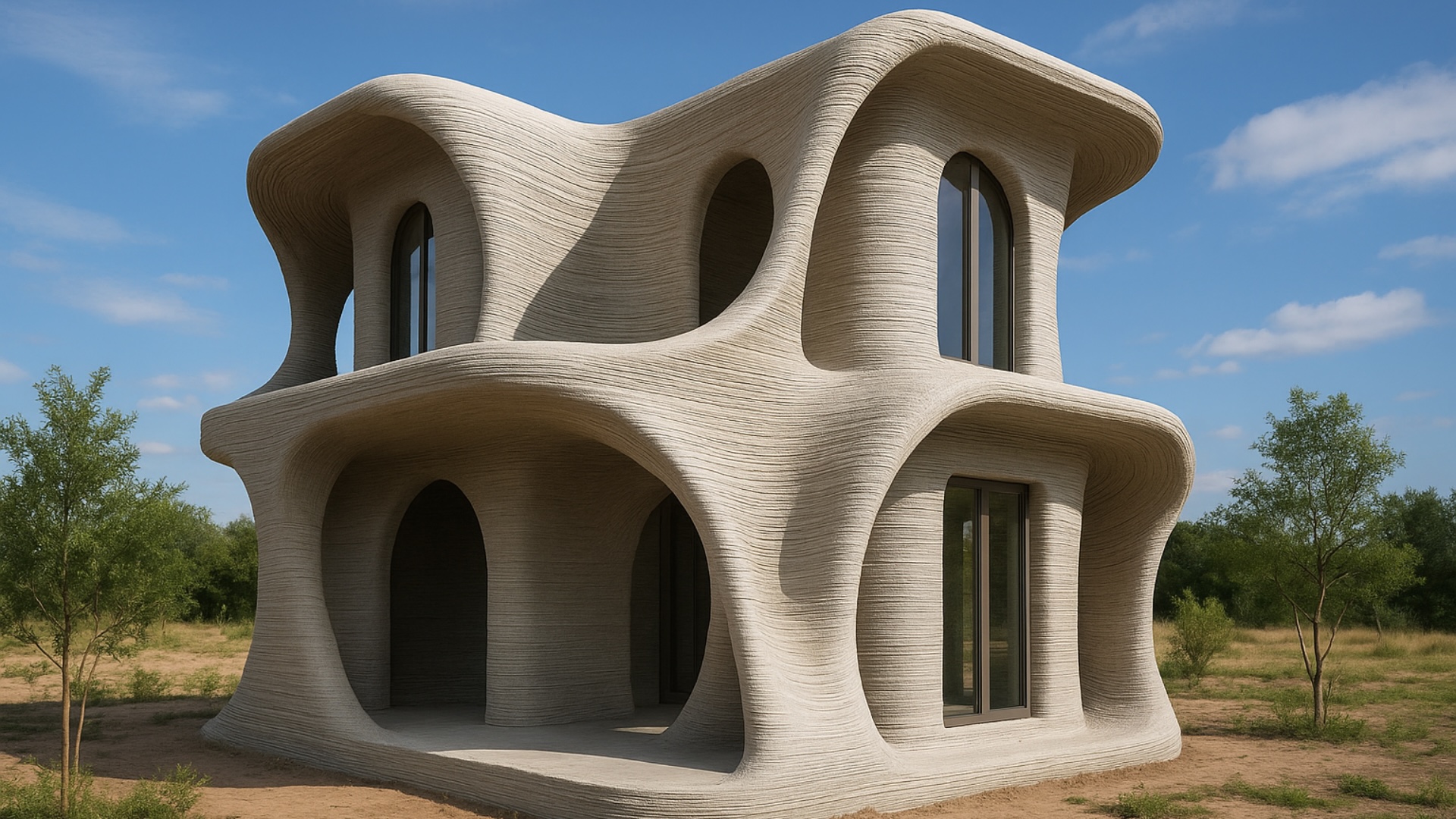3D Printed Architecture: Revolutionizing Construction, One Layer at a Time

Table of Contents:
-
-
- What 3D Printing Means for the Building and Manufacturing Industries
- New Materials for 3D Printing in Construction
- The Benefits of 3D Printing for Architecture
- Speeding Up the Building Process with 3D Printing
- Reducing Costs Through Smarter Printing
- Designing for a More Sustainable Future
- Case Studies in 3D-Printed Architecture
- Current Challenges in 3D Printing for Architecture
- What’s Next for 3D Printing in Architecture?
- Conclusion: 3D Printing Is Reshaping the Future of Architecture
-
What 3D Printing Means for the Building and Manufacturing Industries
3D printing, also known as additive manufacturing, is the process of building up objects one layer at a time using digital models. You can print whole buildings or even small parts of buildings out of concrete, plastic, or even materials that have been used before. Using 3D printing, which usually involves a robotic arm or a construction 3D printer, architects can shape and extrude structures with a lot of accuracy.
Architects can now build buildings and models of buildings faster and in a way that is better for the environment than ever before. More and more people are using 3D printing to make plans for buildings. A lot of things about building construction are changing.
New Materials for 3D Printing in Construction
You can use a lot of different materials for 3D printing in construction. They are made of both new recycled materials and regular concrete. Concrete is still the most popular material for 3D-printed buildings because it lets builders build strong buildings quickly.
Architects and 3D printing professionals are also looking into more eco-friendly and long-lasting options, like using recycled materials. This makes the good things about 3D printing even better. Architects and model makers can use different methods for different projects because 3D printing is so flexible. So, 3D-printed architectural models are better at meeting a wider range of social and environmental needs.
The Benefits of 3D Printing for Architecture
In short, architects can make models that are very complicated and hard to understand with 3D printing. Layers are stacked on top of each other in 3D printing. This makes it easier to create shapes and patterns in architecture that are hard to make in other ways.
But the way buildings are usually built limits the kinds of shapes and structures that can be made. Architects can now build structural parts more easily thanks to additive manufacturing. They can use digital fabrication and computational design to make their big ideas into real things. This makes models of buildings that are new and will last a long time.
Speeding Up the Building Process with 3D Printing
3D printing also makes the building process go faster. Building something the old-fashioned way can take months or even years. It only takes a few days to build a strong building with 3D printing, though.
When you need to respond quickly, being able to quickly print buildings for emergency and low-cost housing is very helpful. You can 3D print whole buildings in a short amount of time without losing strength or quality. People in some places now look for 3D Printing Service Near Me to find this quick, local technology.
Reducing Costs Through Smarter Printing
3D printing makes building things a lot cheaper. The printer nozzle only lets out the right amount of material, which cuts down on waste and saves money. This is also true for projects that build cheap housing, where keeping costs low is very important.
Many people like this kind of 3D printing for both public and private building projects because it can save even more money when digital 3D models and prefabricated 3D printing processes are used. A lot of customers today use 3D Printing Services Online to save money and reduce waste.
Designing for a More Sustainable Future
One great thing about 3D printing is that it doesn’t hurt the environment. 3D printers don’t waste much material because they are so accurate. By using recycled materials, architects can help the environment and save money.
The 3D-printed bridge in Spain is a great example of how materials that can be recycled and are good for the environment are starting to make a difference in the field. More and more people are looking into metal options like Aluminum 3D Printing because they are strong and light.
Case Studies in 3D-Printed Architecture
1. The Dubai Office Building
In Dubai, 3D printing made the first office block in the world. It only took 17 days to put it together. This 2,700-square-foot building is an example of what large-scale 3D printing can do. This design idea is now common in the construction industry, not just for buildings.2. Plans for Housing in Mexico
3. The Mars Habitat Challenge from NASA
Current Challenges in 3D Printing for Architecture
Things are going well, but there are still problems. People are concerned about how long 3D-printed concrete will last and how well it will hold up in bad weather. They are also worried about how much it will cost to make things, like a big 3D printer.
Setting up a 3D printing site can be difficult, and managing the process often requires special skills. City officials and regulatory agencies are still coming up with rules for these new types of buildings. This could make it harder for the industry to use 3D printing on a big scale.
What’s Next for 3D Printing in Architecture?
More and more people will use 3D printing to design and build things as technology gets better. Architects and 3D printing experts are working on new ways to build cities that are cheap, last a long time, and are good for the environment.
Digital manufacturing and physical architectural models could soon be used a lot in modular homes, emergency shelters that can be put together quickly, and urban planning projects that are good for the environment.
WASP, a company that makes 3D printers, and Mario Cucinella Architects have been working together on projects that go beyond just building houses and test the limits of what can be done.
In the future, architecture firms will probably use 3D printing and materials that are good for the environment, like local resources. This is because they are making building materials and digital models. For instance, a 3D Printing Company in Malaysia is already using this technology to make custom homes and eco-friendly buildings for tropical climates.
Conclusion: 3D Printing Is Reshaping the Future of Architecture
3D printing technology has come a long way in a short amount of time, which has opened up a lot of new building options. 3D printing is changing how we plan and put things together when we build.
With the least amount of waste and the most efficiency, these new technologies are helping the architecture industry build complicated structures that last a long time and cost a lot of money.
3D printing is changing architecture in a lot of ways, like making homes out of 3D-printed materials and building things on Mars. As more architects start to use these new methods, 3D printing will change how buildings are designed and built, layer by layer.
Contact us if you’re interested in 3D printing for architecture or curious about how digital fabrication can support your next project. Whether you’re exploring sustainable design, rapid construction, or innovative materials, we’re here to help.
